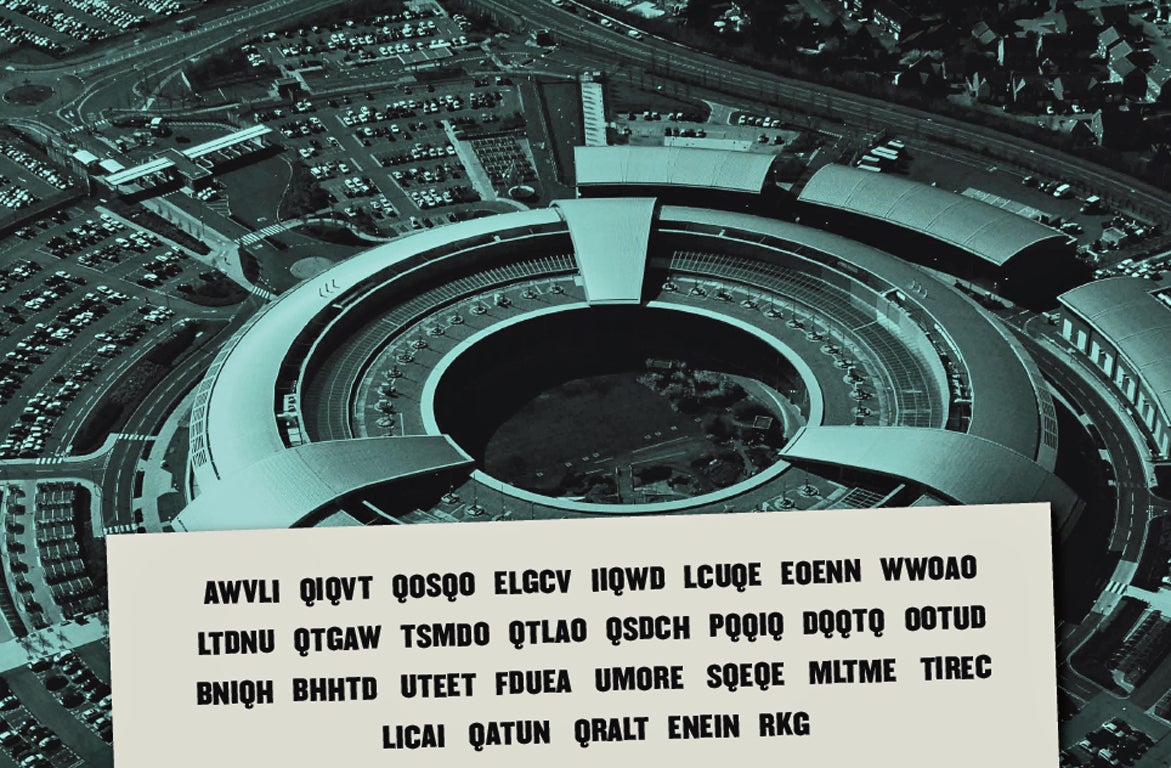Can you crack a code? If so, you could join GCHQ
Cheltenham listening post is setting an online challenge to find the next generation of codebreakers

Executives at GCHQ, the Government’s secretive national listening post in Cheltenham, recently endured the indignity of being dragged before Parliament to explain why they were requesting information from the US National Security Agency’s Prism snooping programme.
Now they are attempting to generate more positive headlines – and possibly their own secrets – by setting an online challenge to find the next generation of codebreakers.
The “Can You Find It” competition, launched on Wednesday, features a string of 143 characters broken into 28 sets of five and one final set of three. Once cracked, the code provides a trail of clues that will lead participants on a “cyber treasure-hunt” to the final answer – and a possible job at the facility in Cheltenham.
While to the uninitiated the sequence appears fiendishly difficult, it is apparently less of a challenge for seasoned code-breakers. On Wednesday a leading cryptographer said the puzzle – which was set by “a GCHQ team of top mathematicians” – could possibly be cracked in “two or three minutes”.
Professor Nigel Smart of Bristol University ’s department of computer science – himself a director of the International Association of Cryptographic Research – says the code is ‘like a crossword puzzle’. “It’s more puzzle solving than serious cryptography; it’s what we call recreational mathematics,” he said.
Prof Smart went as far to offer a step-by-step guide to breaking the code, and speculated that the key to crack it may date from before the digital era.
“It’s certainly from before 1970. Since then, everyone’s used digital stuff. There are letters in groups of five. That’s how they used to transmit code in the pre-digital age.”
When asked how long it would take for him to complete, Professor Smart compared it to asking a professional tennis player to play the medieval game of real tennis.
“It’s like the puzzles people do in their spare times, you can buy books of these things,” he said. “If someone was lucky, with a few good educated guesses it could be cracked in two or three hours, depending on how complicated they’ve made it. If it’s one of the standard cyphers, it might only take a couple of minutes.”
At the launch of the test, GCHQ’s head of resourcing, Jane Jones, said: “The 21st century is confronting us with online threats that are difficult and dangerous, so we want employees who have evolved with the ever-changing digital world and therefore have the right skills to combat these challenges. It’s a puzzle but it’s also a serious test – the jobs on offer here are vital to protecting national security.”
GCHQ is recruiting for a range of jobs with salaries ranging from £26,000 to £60,000. But competition is fierce, with everyone from banks to internet companies, retailers to insurance firms keen to secure the brightest maths and computer minds. In recent years, public and private-sector employers have joined forces to launch schemes like the Cyber Security Challenge, which aims to increase the number of young people entering the sector.
Applicants have six weeks to break the code and complete the treasure hunt. Winners also have the chance to win a Raspberry Pi or Google Nexus 7.
Could you crack it? Code-breaking tips
* Through statistical analysis and guesswork, discern which cipher has been used. A cipher is the pattern by which real text is turned to code. One example could be that the alphabet corresponds to a series of numbers that progress in intervals of two.
* There are many predetermined ciphers, and more than one may have been used.
* Again using statistics, guesswork and intuition, find the key which breaks the cipher (in this example, it might be that a=7. Using the key, the code-breaker can now work out that b=9, c=11 and so on).
* The key, combined with the cipher, will change the code to readable text.
Join our commenting forum
Join thought-provoking conversations, follow other Independent readers and see their replies
Comments